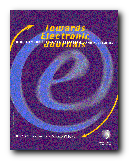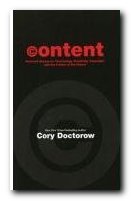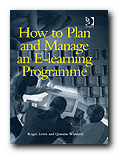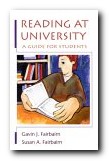resources, techniques, and issues for literary studies
In the field of literary studies, people have been creating digitized texts and making concordances for quite some time now. But until the advent of the Web it was difficult to get an overview of criticism and scholarship which was easily available. In fact it’s still not easy. As the authors of this excellent guide Literature and the Internet point out, it remains common for the latest work to be made available only in the form of conventionally printed books and the dinosaur publishing methods of scholarly journals.
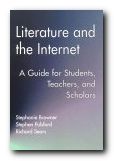 But at last the Internet is now making ever more material easily available to us, and it is the purpose of this guide to advise students, teachers, and scholars how to make the most of the opportunity to retrieve it. They start with a general survey of the pros and cons of the Internet for literary studies, quite rightly pointing out that despite all its obvious advantages, there are still many shortcomings:
But at last the Internet is now making ever more material easily available to us, and it is the purpose of this guide to advise students, teachers, and scholars how to make the most of the opportunity to retrieve it. They start with a general survey of the pros and cons of the Internet for literary studies, quite rightly pointing out that despite all its obvious advantages, there are still many shortcomings:
It has large and obvious gaps, it cannot cover the literary ground as even a moderately well-stocked library can, and it cannot equal the contemporary appeal of a good bookstore.
In fact the differences between books in libraries and texts on the Net are intelligently explored, before we get down to some practical advice on usability. This centres logically enough on using search engines, and they offer an explanation of the different techniques which can be deployed, as well as alerting users to the differences in kind amongst the sources which might be located.
The centre of the book is an extensive list of resources. These are arranged as web site address – in categories ranging from libraries, journals, literary periods, literary criticism, discussion groups and email distribution lists, to individual authors – from Achebe to Zola – and their home pages.
Mercifully, these lists are annotated with useful evaluative comments, making clear distinctions between sites which are commercial, fan pages, and the results of scholarly research. It’s interesting to note how many of the award-winning sites are the work of dedicated individuals (such as Jack Lynch at Pennsylvania and Mitsuharu Matsuoka in Japan) and departments in little-known colleges in the back of nowhere. Major institutions are noticeably thin on the ground.
I felt reassured that the authors had done their homework, had visited the sites they discuss – and were not frightened of levelling criticism at some quite well known names in the literary establishment. They point out the need for more qualitative evaluation of online resources and web site reviews.
This is followed by advice on the evaluation of sites, including a series of basic questions we can ask on arrival. Is the information accurate? Is it complete? And is there any acknowledgement of the sources being used?
There is also a section for teachers, discussing how computers and the Internet can be used in literary studies, with suggestions (for instance) for hypertext assignments and web essays – though I hope their term Webliographies doesn’t catch on.
They consider the nature of electronic texts – from plain ASCII, through the Standard Generalized Markup Language (SGML) and HyperText Markup Language (HTML), and even as far as the Text Encoding Initiative (TEI) and Extensible Markup Language (XML).
These are only touched on lightly, with their differences briefly explained, but this is a valuable topic to raise in the consciousness of students and teachers, especially in the light of controversies surrounding the form in which commercial electronic books are being issued.
The guide ends with considerations of the theoretical and political connections between literary studies in an era of digitized text – exploring some of the notions raised in recent years by Jay Bolter, George Landow, and J. Hillis Miller.
They even have some interesting comments to make on the likely impact of Information Technology on academic careers – including the vexed issue of academic publishing, which must surely be due for major convulsions in the next few years.
Many people have argued that it’s now rather pointless issuing printed resource guides which will be quickly outdated. But there is a reason for such publications. The fact is that it’s often quicker to locate information in a book, rather than searching through files or favourites using a browser.
Certainly, I’m very pleased that this book is on my desk, and I look forward to exploring its suggestions and passing on any gems to my own students – who are currently learning how to write, link, zip, and upload their first web essays.
© Roy Johnson 2000
Stephanie Browner, Stephen Pulsford, and Richard Sears, Literature and the Internet: A Guide for Students, Teachers, and Scholars, London/New York: Garland, 2000, pp.191, ISBN: 0815334532
More on literature
More on the novella
More on literary studies
More on short stories

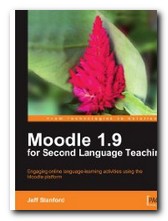

 Laurel Alexander, Education & Training on the Internet: An essential source for students, teachers and education providers, Plymouth: Internet Handbooks, 2000, pp. 192, IBSN 1840253460. Guide to online resources for students and tutors. Exstensive listings of online courses in UK and abroad.
Laurel Alexander, Education & Training on the Internet: An essential source for students, teachers and education providers, Plymouth: Internet Handbooks, 2000, pp. 192, IBSN 1840253460. Guide to online resources for students and tutors. Exstensive listings of online courses in UK and abroad.
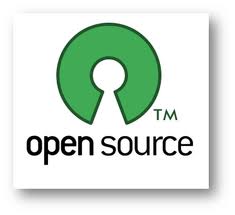 It is now not uncommon to hear of staff packing any remaining teaching commitments into one term (or semester) – giving them two-thirds of a year free to do as they wish. At professorial level it’s even worse. At my former university a well-known academic with an international reputation on a six-figure salary taught for two hours once a fortnight, refused to make his email address or his telephone number available to anyone, and lived outside the UK, jetting in for his celebrity seminars every two weeks and returning home the same day.
It is now not uncommon to hear of staff packing any remaining teaching commitments into one term (or semester) – giving them two-thirds of a year free to do as they wish. At professorial level it’s even worse. At my former university a well-known academic with an international reputation on a six-figure salary taught for two hours once a fortnight, refused to make his email address or his telephone number available to anyone, and lived outside the UK, jetting in for his celebrity seminars every two weeks and returning home the same day.